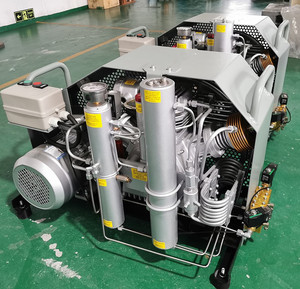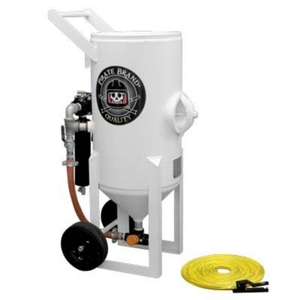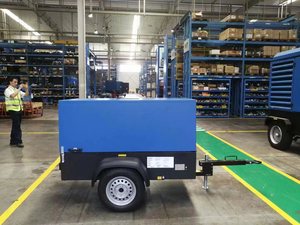
All categories
Featured selections
Trade Assurance
Buyer Central
Help Center
Get the app
Become a supplier

(5296 products available)






















Axial compressors are multistage machines that progressively increase the pressure of gases by passing them through rotors and stators. There are two main types of axial gas compressors based on flow.
Mixed-flow axial compressors
In mixed-flow axial compressors, the gas flow direction is a combination of axial flow and radial flow. This compressor type has a more compact design and is suitable for applications that require high-pressure increases in smaller volumes.
Axial flow compressors
Axial flow compressors have a typical layout in which the gas enters the machine parallel to the rotor axis. This type of compressor can achieve very high volumes but has to work with more extensive and heavier machines.
The other way to classify an axial air compressor is based on rotor design.
Multi-shaft axial compressors
Multi-shaft axial compressors employ more than one shaft to drive the rotor. Because of this, there is a stator in the compressor that helps to make the rotor work better. This type of compressor usually works better at high flow rates and is generally more suitable for industrial use.
Single-shaft axial compressors
In a single-shaft compressor, the rotor and stator make up a simple design that has few parts to worry about. So, single-shaft compressors are easy to make, use, and maintain. Besides, they work well for applications with moderate to high gas flow rates.
Capacity
Axial compressors generally deal with large-volume gas flow. The compression capacity of an axial compressor is usually measured in cubic feet per minute (CFM) or cubic meters per hour (m3/h) and varies depending on the model and design. Some compressors may have the capacity to compress several thousand CFM of gas
Pressure Ratio
This refers to the increase in gas pressure from the inlet to the outlet of the compressor. It is calculated as the ratio of outlet pressure to inlet pressure. In many industrial applications, the pressure ratio of an axial compressor can reach 3~10 or more.
Power
The power of an axial compressor is usually expressed in kilowatts (kW) or horsepower (HP). An axial compressor's motor power may range from 100kW to several thousand HP, depending on its capacity and size.
Efficiency
Axial compressors, like other types of compressors, have their efficient operating areas. Efficiency is expressed by the isentropic efficiency of the compressor, which is the ratio of the actual energy conversion to the energy conversion that happens in an ideal isentropic process. The isentropic efficiency of an axial compressor can reach 80% to 90% or more.
Cleaning and Disinfection
To ensure the normal operation of the axial flow compressor, it is necessary to clean the external parts of the machine every month to remove dust, impurities, and other foreign bodies. And to prevent the reproduction of bacteria and viruses, it is also necessary to carry out disinfection regularly.
Check the Fasteners
It is necessary to check the fasteners of the axial-flow compressor regularly to ensure that each connection part is firm and not loose. This can avoid mechanical vibration and deviation during operation, thereby improving the stability and reliability of the equipment.
Check the Belts and Chains
It is necessary to check the tension and wear of the belts and chains of the axial-flow compressor regularly to ensure their proper functioning. If they are found to be loose or worn, they need to be adjusted or replaced in time to avoid mechanical failure and abnormal operation.
Lubrication of Moving Parts
The moving parts of the axial compressor should be lubricated regularly with grease to ensure their smooth operation. Lubricating moving parts reduces friction and wear, prolonging mechanical life, and improving operational reliability.
Some of the main uses for axial air compressors are provided below.
Aero engine :
An axial flow compressor works like the engine in a commercial aircraft. This is because it can move a lot of air while taking up little space. When it's put in the rear of a jet engine, its main job is to add more air to make the process of burning fuel to make thrust more efficient. Also, thanks to its smart design, a few of these compressors can be enough to fulfill the air demands of one engine.
Gas turbine power plants:
This speed of moving air done by axial flow compressors is great to help create electricity too. The way this works is that the compressed air spins the gas turbines that then drive electric generators to make power. Here, the job of the compressor is to make the gas that comes from burning fuel higher by cramming more of it in thanks to the pressure increase from compressing the air.
Industrial machines:
The heavy-duty nature of axial compressors lets them live up to the demanding requirements of factories and workshops. There, a constant and large supply of compressed air is essential to keep the production lines rolling without stopping. Also, the long-lasting performance and efficiency of axial compressors help keep operating costs low by reducing the amount spent on energy to produce that air.
Petrochemical plants:
Oil & gas extraction and refining processes rely on axial compressors to move gases, not just air, at high volumes inside their pipelines. Compressing natural gas for transport through its network all the way to end-users is another crucial part. In offshore facilities far from land, some compressors must withstand extreme conditions, making the durability and strength of axial machines very important.
Marine vessels:
Another application where axial compressors operate in harsh environments and must be seawater resistant is aboard large cargo ships. These ships move international trade goods across the world's oceans. Heavy-duty axial compressors are essential for maintaining refrigeration systems inside the cargo holds of container vessels because of axial refrigeration compressors. Controllers can track the precise temperature and humidity conditions required for perishable goods to arrive at their destination in pristine condition and on time.
Choosing a suitable axial air compressor requires consideration of various factors to ensure that the selected machine meets expectations and industrial applications. One of the most important things to consider when selecting an axial flow compressor is the machine's capacity. A good flow rate or compressing capacity should be considered when choosing an axial air compressor so that it can fulfill a specific demand.
The working pressure or pressure ratio is another important factor that determines the success of an axial air compressor. Depending on the application, the chosen machine should have sufficient pressure to do the required work. The next thing to consider is the overall efficiency of the machine. Selecting an axial air compressor with higher efficiency can reduce energy costs and boost performance.
Buyers should consider the motor type and its power. Whether it's electric, diesel, or any other form, the power has to be enough to drive the compressor's operations. Additionally, the physical size of the compressor should be considered, as some applications may need portable machines. Finally, the maintenance needs of an air compressor should be considered, as it can determine the machine's longevity and operational efficiency over time.
Q1: What is the difference between axial and centrifugal compressor?
A1: An axial air compressor uses a rotor-stator-rotor-stator arrangement to compress air, while a centrifugal compressor uses a radial wheel. Centrifugal air compressors are generally smaller in size and heavier than axial compressors. But axial air compressors can efficiently process large volumes and flow rates.
Q2: What are some of the recent developments in axial compressors?
A2: Some of the recent developments in axial compressors include new materials which can withstand high temperatures and are/ or lightweight; artificial intelligence; additive manufacturing; and aerodynamics.
Q3: What is the future of axial flow compressors?
A3: As the demand for energy-efficient and high-performance machines is growing, the role of axial flow compressors will also increase. The compressors are expected to have more advanced features like artificial intelligence for better management and maintenance. More research will probably be done on machine and material innovation to improve the design of axial flow compressors.